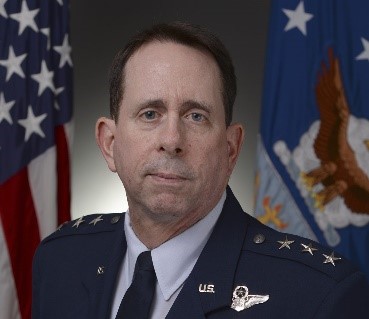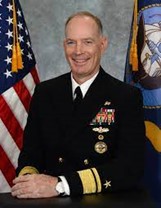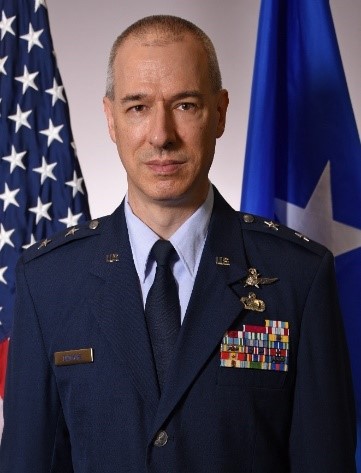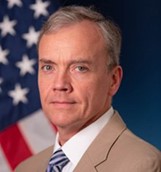Panel 4: Mind-Tech Nexus: How Can New Tech Support a 21st Century Patton, Nimitz, Marshall, Their Staffs, and Their Human Warfighters?
9 February, 9:05-10:20
New technologies aim to extend decision makers’ situational awareness through artificial intelligence (AI) and digital networks that connect myriad sensors. Joint All-Domain Command and Control (JADC2) seeks to integrate sensors from across the military services. DARPA’s Mosaic Warfare aims “to fight as a system of systems” “at mission speed.” DoD programs even aim to harness ocean life as a network of billions of living, self-replicating sensors. Yet systems feeding ever more information to human decision-makers is just half the equation: Humans possess incredible perceptual and information processing capabilities, but they remain humans with cognitive limits to what they can process and how they decide. Tech can extend powerful human capabilities and exacerbate human fallibilities. Thus, this panel asks: how can these new sensor, networking and AI technologies interface most effectively with the very human commanders and warfighters?
Lieutenant General (Ret) John Shanahan (Moderator)
Lieutenant General John (Jack) N. T. Shanahan, United States Air Force, Retired, retired in 2020 after a 36-year military career. In his final assignment he served as the inaugural Director of the US Department of Defense (DoD) Joint Artificial Center (JAIC). Jack served in a variety of operational and staff positions in various fields including flying, intelligence, policy, and command and control. He commanded at the squadron, group, wing, Agency, and Numbered Air Force levels. As the first Director of the Algorithmic Warfare Cross-Functional Team (Project Maven), Jack established and led DoD’s pathfinder AI fielding program charged with bringing AI capabilities to intelligence collection and analysis.
Jack is a 2022 graduate of the North Carolina State University Master of International Studies program. He serves an advisor to the Special Competitive Studies Project (SCSP) Defense Panel. He is an Adjunct Senior Fellow with the Technology and National Security Program at the Center for a New American Security (CNAS); is a member of the Institute of Electrical and Electronics Engineers Standards Association (IEEE-SA) Autonomous Weapons Systems Assurance and Safety Subcommittee; serves on the Advisory Group for the Information Technology and Innovation Foundation (ITIF) Hamilton Center on Industrial Strategy; and is a member of the National Academies of Sciences, Engineering, and Medicine (NASEM) Committee on Testing, Evaluating, and Assessing Artificial Intelligence-Enabled Systems under Operational Conditions for the Department of the Air Force. He serves as a consultant on the use of AI-enabled technologies for national security.
Rear Admiral Douglas Small
Rear Admiral Doug Small is a native of Birchwood, Wisconsin. He is a 1988 graduate of Marquette University in Milwaukee, Wisconsin, where he received a Bachelor of Science in Physics. He also holds a doctorate degree in physics from the Naval Postgraduate School in Monterey, California.
Small’s operational tours included mechanical division officer and main propulsion assistant on USS Camden (AOE 2), in which he deployed in support of Operation Desert Storm, as well as combat systems officer (plankowner) on USS Iwo Jima (LHD 7). During Operation Iraqi Freedom he served as the first technical director of Joint Crew Composite Squadron (JCCS) 1, assembled by the Navy to assist with defeating then-prevalent radio-controlled improvised explosive devices (IED).
An engineering duty officer since 1997, Small had a number of tours in acquisition, starting at the Naval Surface Warfare Center, Dahlgren Division and then the Missile Defense Agency. Moving to the Program Executive Office for Integrated Warfare Systems (PEO IWS), Small was the electronic warfare assistant and then the major program manager for above water sensors (PEO IWS 2), overseeing the development of improvements for the Navy in electronic warfare and radar. Following this tour he served as the executive assistant to the Assistant Secretary of the Navy for Research, Development and Acquisition.
Small’s first flag assignment, in 2016, he was the program executive officer for Integrated Warfare Systems, where he led the team responsible for development, delivery, and sustainment of all surface navy combat and weapon systems. He assumed command of the Naval Information Warfare Systems Command in August 2020, leading a global workforce of 11,000 civilian and military professionals who design, develop, install, and support Navy’s networking, communications, information, and cyber capabilities and systems. Small’s personal awards include the Distinguished Service Medal, Legion of Merit, and Bronze Star; unit awards include the Army Meritorious Unit Commendation and various campaign and service awards.
Major General Matthew D. Dinmore
Major General Matthew D. Dinmore serves as Air National Guard Assistant to the Commander, 16th Air Force. In this role, he coordinates information warfare force requirements among 16th Air Force, Air Combat Command, the National Guard Bureau, and state National Guard units to ensure trained and equipped Air National Guard forces are seamlessly integrated into Air Force and national information warfare capabilities.
General Dinmore was commissioned in 1992 as a Distinguished Graduate of the Reserve Officer’s Training Corps at Rensselaer Polytechnic Institute. He served on active duty from 1994 through 2002, following which he joined the 175th Information Operations Squadron in the Maryland Air National Guard. General Dinmore played key roles in this first-generation Guard cyber unit, including serving as its first Mission Capabilities Director, leading cyber engagements with Maryland’s State Partnership Program partner of Estonia, and ultimately as Commander after the unit was renamed to the 175th Network Warfare Squadron. As the state’s J6, he was responsible for communications for all-hazards domestic response, and was a senior cyber advisor to the Adjutant General. He also served with USCYBERCOM as a Joint Test Director leading a novel program to create DoD cyber defensive capabilities. Prior to his current position, the general was the Mobilization Assistant to the Commander, Cyber National Mission Force, USCYBERCOM, while also dual-hatted as Chief of Staff of the Maryland Air National Guard.
In his civilian career, Dr. Dinmore is a principal staff member at the Johns Hopkins University Applied Physics Laboratory where he serves as Artificial Intelligence Group Chief Engineer. He is a thought leader and architect of intelligent, interactive computational solutions in support of a range of government sponsors in areas including artificial intelligence, healthcare, cyber operations, intelligence, analytics, data science, and systems engineering. He’s led multiple research efforts as principal investigator, managed a research area portfolio within the Cyber Operations Mission Area, and led a multi-year data science initiative. Dr. Dinmore received his PhD from University of Maryland Baltimore County in Information Systems where his research focused on human/computer interaction and software engineering as applied to end-user computing.
Dr. Timothy P. Grayson
Dr. Timothy Grayson is Special Assistant to the Secretary of the Air Force with the primary responsibility to coordinate concept development, analysis, and implementation of the Secretary’s Operational Imperatives, the critical operational air and space capabilities needed to deter, and if necessary, defeat our pacing challenges.
Prior to this role, Dr. Grayson was the Director of the Strategic Technology Office (STO) at DARPA. He led the office in development of breakthrough technologies to enable warfighters to field, operate, and adapt distributed, joint, all-domain combat capabilities at continuous speed. Dr. Grayson came to STO in 2018 from a varied career in government and industry. Immediately prior to DARPA he was the founder and president of Fortitude Mission Research LLC, a consulting company specializing in strategy and technology analysis related to defense and intelligence. Dr. Grayson has extensive government experience. He spent several years as a senior intelligence officer with the Central Intelligence Agency (CIA) in the Directorate of Science and Technology and culminating in a tour at the Office of the Director of National Intelligence. Prior to CIA, Dr. Grayson was a program manager and senior scientist at DARPA and before that was a research fellow at Air Force Wright Laboratory (now part of Air Force Research Laboratory). Dr. Grayson holds a Ph.D. in Physics from University of Rochester, where he specialized in quantum optics, and a B.S. in Physics from University of Dayton with minors in mathematics and computer science.



